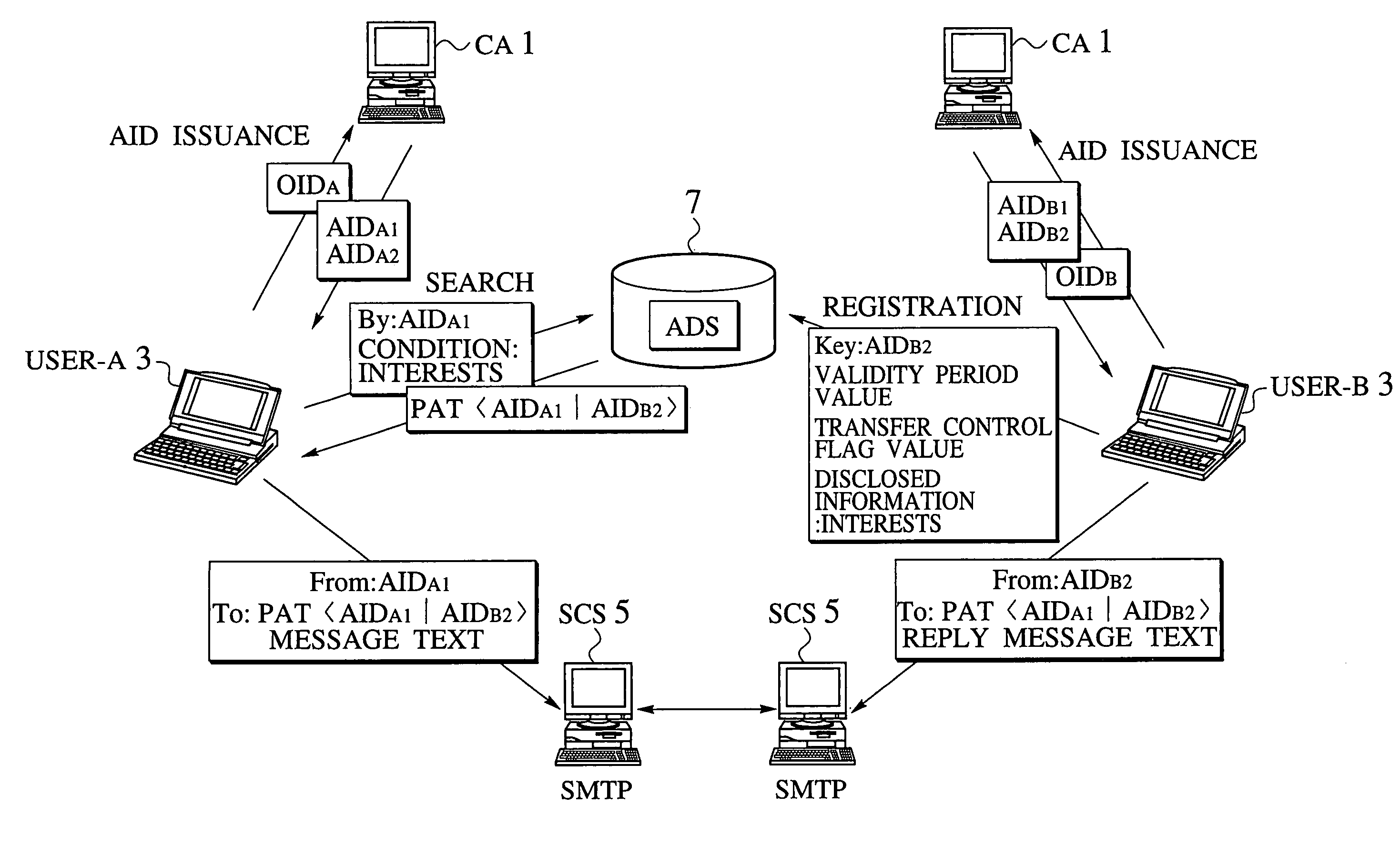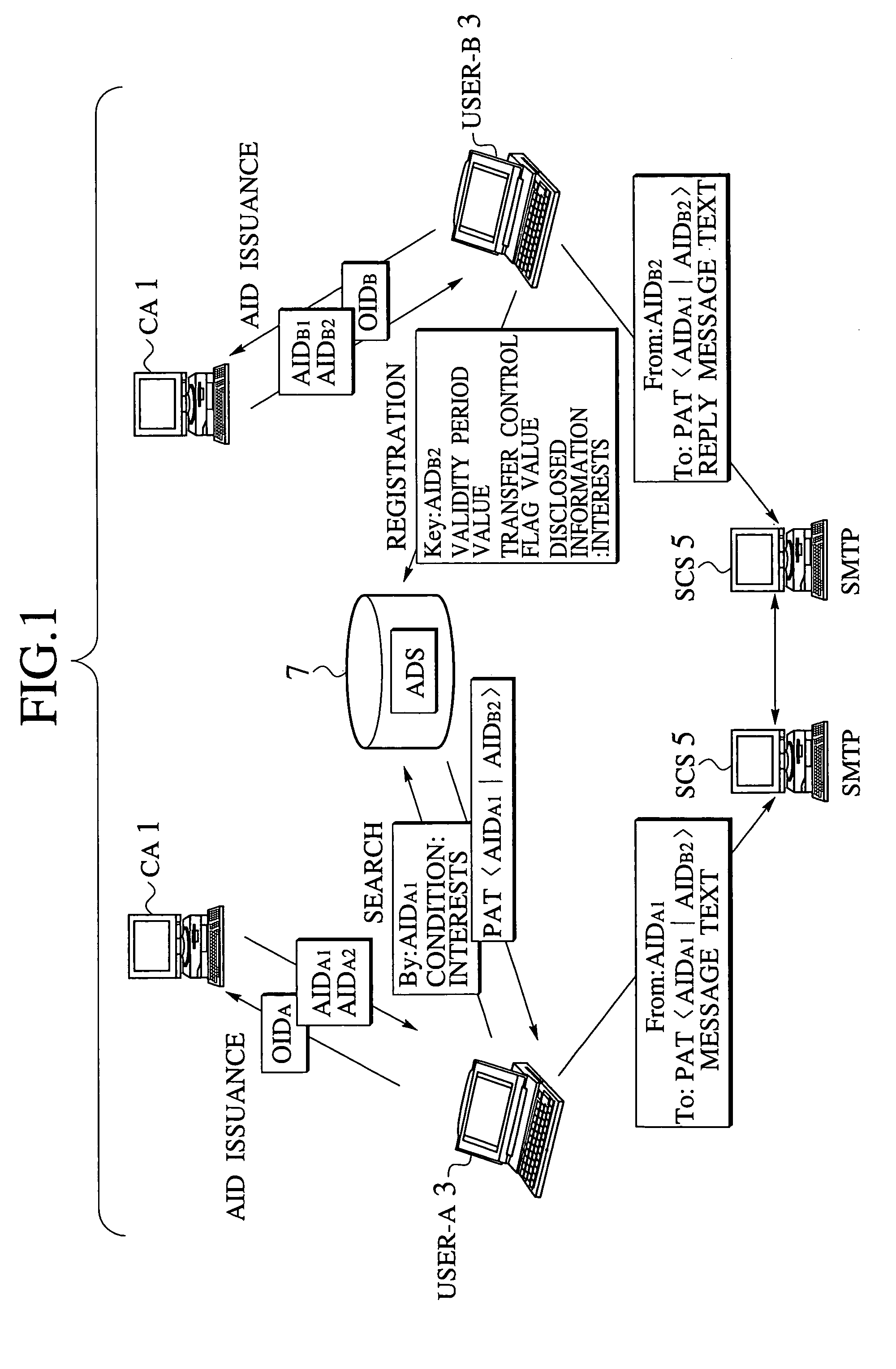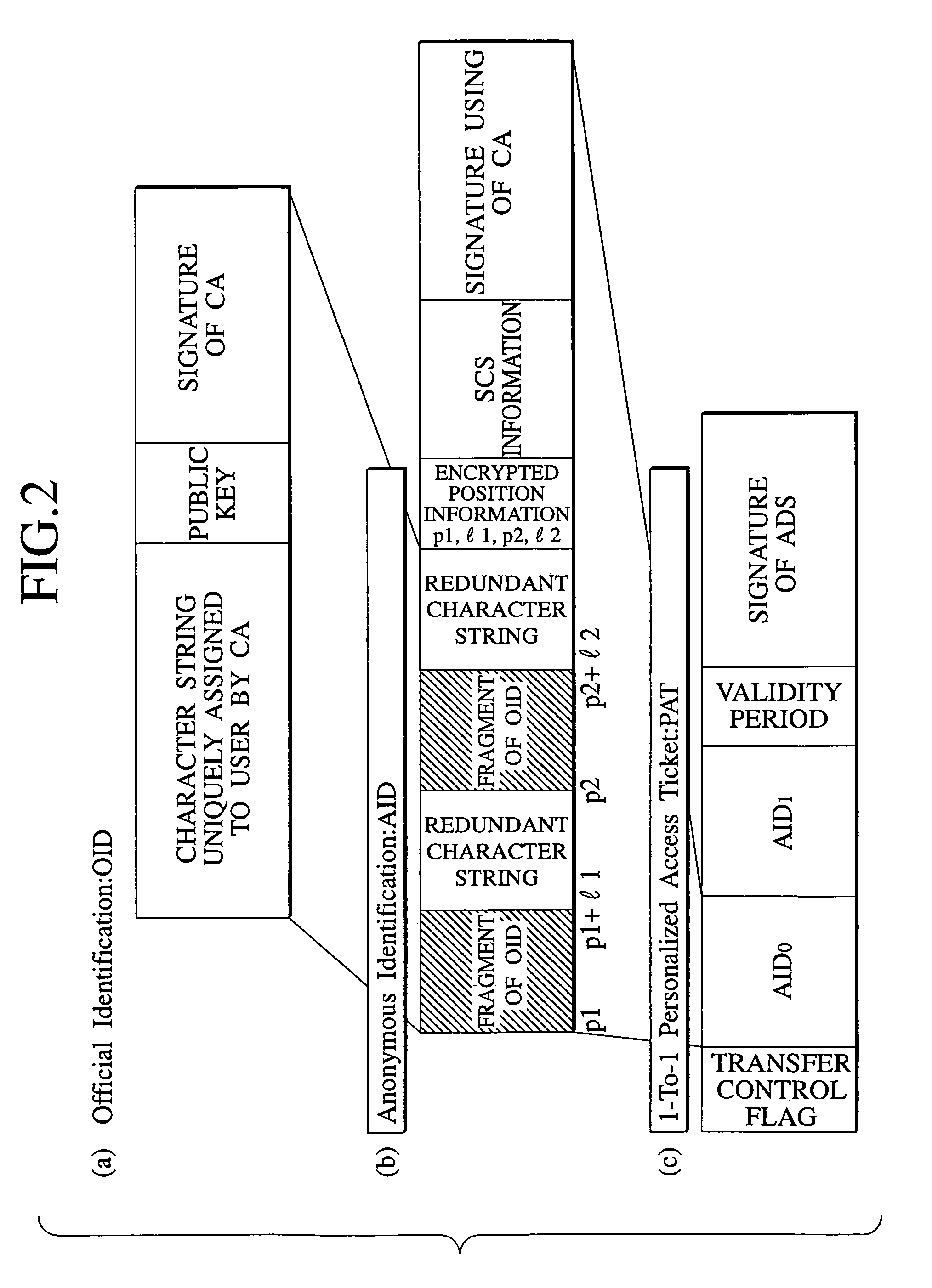Email access control scheme for communication network using identification concealment mechanism
a communication network and access control technology, applied in the field of email access control scheme, can solve the problems of lowering the working efficiency, spam and harassment using emails are drastically increasing, and spam often contains uninteresting or unpleasant content for the recipien
- Summary
- Abstract
- Description
- Claims
- Application Information
AI Technical Summary
Benefits of technology
Problems solved by technology
Method used
Image
Examples
first embodiment
[0211]Referring now to FIG. 1 to FIG. 7, the email access control scheme according to the present invention will be described in detail.
[0212]The email access control scheme of the present invention enables bidirectional communications between a sender and a recipient appropriately while maintaining anonymity of a sender and a recipient on a communication network. Basically, this is realized by disclosing only information indicative of characteristics of recipients in a state of concealing true identifiers of the recipients, and assigning limited access rights with respect to those who wish to carry out communications while maintaining the anonymity according to the disclosed information.
[0213]More specifically, an Anonymous Identification (abbreviated hereafter as AID) that functions as a role identifier in which a personal information is concealed is assigned to a user, and this AID is disclosed on the network in combination with an information indicative of characteristics of the...
second embodiment
[0279]Next, with references to FIG. 8 to FIG. 24, the email access control scheme according to the present invention will be described in detail.
[0280]In contrast to the first embodiment described above which is directed to the case where a sender and a recipient are set in 1-to-1 correspondence, this second embodiment is directed to the case where a sender and recipients are set in 1-to-N correspondence and a generation of a new PAT and a content change of the existing PAT can be made by the initiative of a user. Here, the sender is either a holder of the PAT or a member of the PAT. Similarly, the recipient is either a holder of the PAT or a member of the PAT.
[0281]In general, a membership of a group communication (mailing list, etc.) is changing dynamically so that it is necessary for a host of the group communication to manage information on a point of contact such as telephone number, email address, etc., of each member. In contrast, in the case where it is only possible to newl...
third embodiment
[0433]Next, with references to FIG. 25 to FIG. 28, the email access control scheme according to the present invention will be described in detail.
[0434]In the generation of a new PAT (MakePAT) and the PAT holder change (TransPAT) of the above described embodiment, it is necessary to give member AIDs and Enablers of member AIDs to the holder of the PAT, but when they are given to the holder, it becomes possible for that holder to participate the group communications hosted by the other holders by using the acquired member AIDs. Namely, there arises a problem that the pretending using the member AIDs become possible. Moreover, if that holder places the acquired member AIDs and Enablers of member AIDs on a medium that is readable by unspecified many, these member AIDs become accessible to anyone so that there arises a problem that the harassment to the users of the member AIDs may occur and the pretending using the member AIDs by a third person also become possible.
[0435]For this reaso...
PUM
 Login to View More
Login to View More Abstract
Description
Claims
Application Information
 Login to View More
Login to View More - R&D
- Intellectual Property
- Life Sciences
- Materials
- Tech Scout
- Unparalleled Data Quality
- Higher Quality Content
- 60% Fewer Hallucinations
Browse by: Latest US Patents, China's latest patents, Technical Efficacy Thesaurus, Application Domain, Technology Topic, Popular Technical Reports.
© 2025 PatSnap. All rights reserved.Legal|Privacy policy|Modern Slavery Act Transparency Statement|Sitemap|About US| Contact US: help@patsnap.com



